Wine Ark announces most collected wines
Wine Ark, Australia’s largest wine storage provider, has released its list of Australia’s Most Collected Wines for 2016, with Penfolds Bin 389 topping the list knocking off big brother Grange after nine years in the top spot. Wine Ark’s list of the 50 most collectable wines, released every three years, has become the go-to guide on the subject and the results are a clear indication of trends when it comes to cellaring. Jeremy Oliver, wine writer and presenter, said there were lists and rankings of Australian wine labels but none were more current than this list from WineArk.
